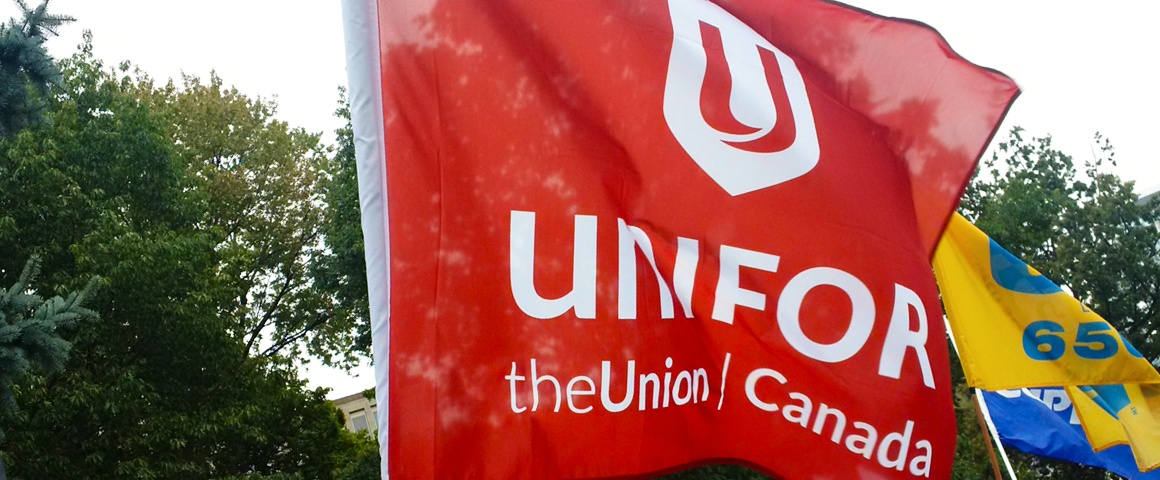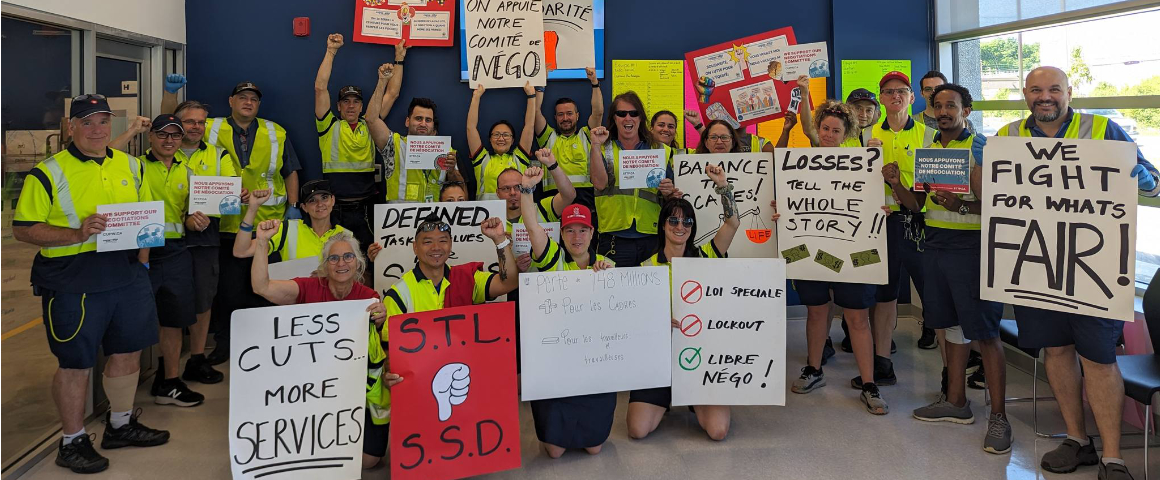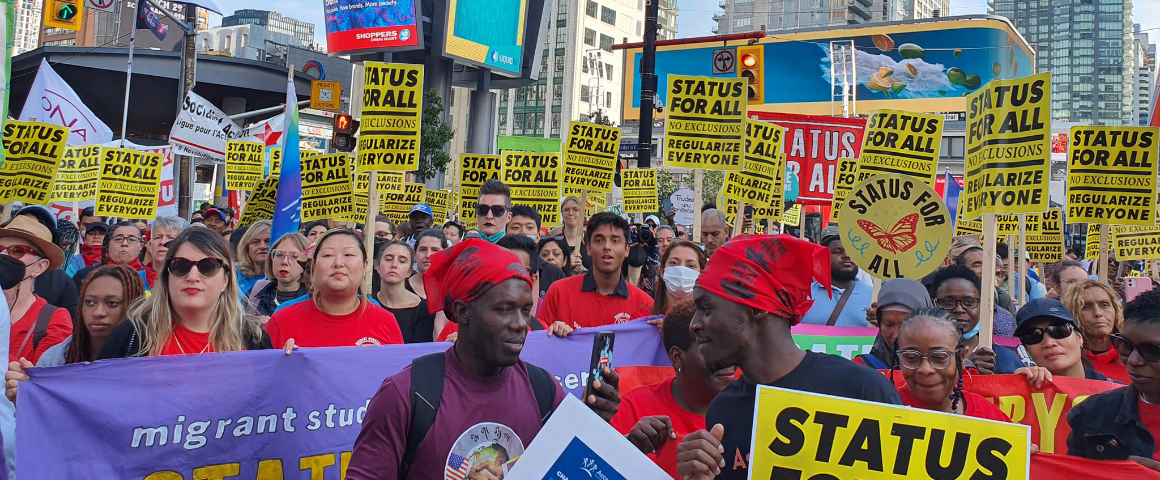Statement by the Central Trade Union Commission of the Communist Party of Canada
The announcement on January 17 by the National Executive Board of UNIFOR, Canada’s largest private sector union, that it was disaffiliating from the Canadian Labour Congress, effective immediately, is a shock to millions of workers in Canada – over 3 million of whom are members of unions affiliated to the CLC, and 300,000 who are members of UNIFOR.
Many remember an earlier split in the late ‘90s, ostensibly over the same issues, which fractured the labour movement for almost a decade. During that time governments and corporations drove a vicious austerity agenda that cut jobs and wages, closed plants and factories, destroyed defined benefit pension plans, orchestrated bankruptcies under the CCAA that stole workers’ wages, pensions, and benefits – just like US Steel, Nortel Networks, and Sears are doing today. Union density was undermined, the pay gap grew wider and part-time and precarious work replaced good union jobs. Public and post-secondary education and healthcare were under sharp attack, core funding for public services and universal social programs was slashed, and the trade union movement itself came under sustained attack. Corporations raked in super-profits, half a million manufacturing jobs disappeared, and real wages, purchasing power, and living standards fell.
This was all part of the neo-liberal agenda to expand corporate control, and to smash the power, influence and capacity of organized labour to become the backbone of an organized Canada-wide resistance, and the starting point to mount an effective counter-offensive.
But the top leadership, burdened under the weight of right-wing business unionism, was unable to recognize its role and responsibilities to unite its ranks and lead a militant struggle against austerity. While workers chafed, instead of exposing the political advocates of austerity in Ottawa and the provinces, many labour leaders embraced the Liberals and NDP, and doused militant, independent labour political action as destructive to these new (and not so new) political partnerships.
At the same time, labour conventions became increasingly centralized, leaving less and less time to debate issues, and making it much harder for delegates not already in leadership – or without a nod from leadership – to run for office. Votes were whipped and slates were the order of the day in too many union meetings and conventions. The labour movement settled in for a long sleep under CLC President Ken Georgetti, and few of the affiliates complained. As union density declined, raiding became a widespread way to maintain membership and the dues income needed to maintain operations. It was the norm, not the exception.
But workers’ interests are fundamentally opposed to the interests of the Big Business parties and the corporations they speak for. Tri-partism and bi-partism are poison, aiming to block and blunt the workers’ struggles.
As economic conditions worsened, workers in some of the lowest paid industries began to demand more, asking their unions to protect them against poor contracts, wages and conditions. Pressure was building for change, for the labour movement to be stronger, more militant, and more independent of employer influence.
The response of right-wing business unionism was to tighten up the organization of the trade union movement even more.
The CAW, at that time a union with a reputation as a militant, class conscious and fighting organization with a commitment to social unionism, was also in a difficult and vulnerable situation with the loss of the Auto Pact. The Big three auto companies seized the moment to squeeze the CAW with threats of closing plants and layoffs of hundreds, even thousands of workers, unless concessions were adopted. The union looked to the Liberal Party for help to stop the closures and layoffs, while also expanding its membership drives well beyond the automotive sector. Many other workers were attracted by the high wages and good contracts for autoworkers, and by the union’s militant history, and today autoworkers account for only 25% of UNIFOR’s members. As to the Liberals, their main contribution to the union was photo-ops with union leaders, and support for the contract stripping that the Tories ordered after the 2008 economic meltdown.
In the late ‘90s the SEIU charged the CAW with raiding, after SEIU locals in Canada opted to leave SEIU and join CAW.
As the CLC’s umpire noted in his report to the CLC, there was no method within the CLC Constitution for Local unions to disaffiliate without the agreement of the parent union. The reason was that the CLC’s affiliates are the unions, not the union Locals. The conundrum facing local unions that want out of CLC affiliates (which are often international unions, located in the US) must convince their union leaderships that they should be allowed to leave to join another union. With the exception of progressive unions like UE, which jointly negotiated a fraternal split at the border, almost every other union has responded by imposing a trusteeship of the local union, as Unite-HERE in the US did to Local 75 in Toronto last month.
Article 4 of the CLC Constitution has been a burning issue in the trade union movement for more than 20 years, with no resolution in sight to date. This is at the heart of the current dispute, according to the UNIFOR letter of disaffiliation. The CLC’s decision not to include UNIFOR in a sub-committee struck to review the issue suggests that a resolution was not being seriously considered.
But questions have arisen about UNIFOR’s constitution and the legality of its National Executive Board’s decision to disaffiliate without any reference to a convention or to the membership more broadly. UNIFOR members heard about the decision in the same way that everyone else did – on the news and on the internet.
They also heard that the CLC had directed that UNIFOR members are not to be seated at provincial labour federations or Labour Councils. Many UNIFOR members are Labour Council delegates, sitting on Committees, or elected Presidents and Executive members. Labour activists are distressed and angered that the on-the-ground centres of labour and community struggles across the country are being disrupted by struggles “at the top” that appear to have little to do with the bread and butter struggles on the ground: against austerity, against Trump’s NAFTA plans, against war and military spending, and much more.
Labour Councils in Hamilton, Durham and London have already refused to ask UNIFOR delegates to leave, and that is exactly what the doctor ordered for labour unity and solidarity. The inability of the CLC and UNIFOR leaderships to resolve key issues at the top levels should not tear apart the movement at the base, in the communities, in the struggles now and just ahead.
There is no doubt that the fight for Canadian autonomy, sovereignty and democracy is directly related to the ability of the labour movement to unite against austerity and the corporate assault. It’s directly related to a labour movement in which class struggle leadership prevails and business unionism is a disappearing relic. It’s related to a trade union movement that utilizes the energy, initiative and capacity of its members to build its strength, and which cooperates instead of competing with its sister unions here at home, and globally.
The decision of UNIFOR’s National Executive Board will not help to resolve the real problems that exist in the CLC. Disaffiliation will divide and weaken the labour movement at a very dangerous time for workers, their families, and for all those who are unorganized, precarious and racialized workers, and the million unemployed and under-employed. This includes our youth, whose future is both poor and uncertain.
The CLC should be equally concerned, as it too will be weakened. Raiding will gather steam everywhere, to the detriment of the unorganized workers and the labour movement as a whole. This will include raids on UNIFOR as well as on CLC affiliates. There is no doubt the employers will take every advantage possible.
Instead of sudden divorce, UNIFOR and the CLC should go back to the table and work to resolve the problems created over many years, and which must be honestly and openly addressed now. The voices of workers in Canada must be heard on this issue: they are not on-lookers but the substance of Canada’s injured labour movement.




